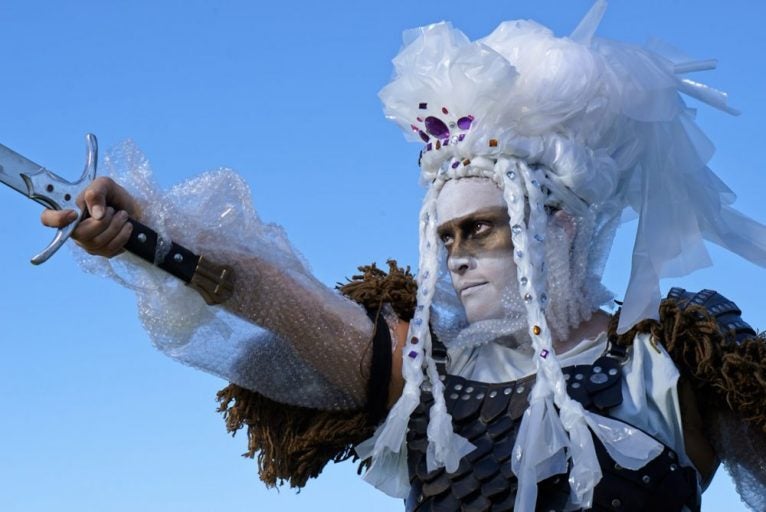During Hispanic Heritage Month, UCF Today will share some of our students’ and faculty members’ stories and how being Latino has shaped their lives.
Before she became a professor, Wanda Raimundi-Ortiz had her work exhibited in galleries around the world.
Now, this assistant professor in UCF’s School of Visual Arts & Design serves as a self-styled ambassador for first-generation college students and any others who are intimidated by the culture of academia.
They need allies — this [UCF] is probably the only place they’ll be able to find allegiances.”
Her latest project, a tribute to the Pulse nightclub tragedy, will be at the National Museum of Mexican Art in Chicago as part of its 30th annual Día de los Muertos exhibition . Día de los Muertos, the Mexican Day of the Dead, is an annual holiday held in remembrance of dead family and friends. Raimundi-Ortiz has been collecting items of significance from people affected by the Pulse tragedy to craft a three-tiered altar that will debut at the event.
“I wanted to make sure that the feeling was authentic, that there’s a conversation occurring about healing and transcendence, and maybe a bit educational, to acknowledge the Latino presence, because it was a Latino tragedy,” she said.
Raimundi-Ortiz’s art — her paintings, drawings, photographs and performance-art pieces — are largely based upon self-examination. Her YouTube character Chuleta, for example, a tough-talking Latina personality who deconstructs the oftentimes abstruse elements of the art world, is based on her experience of disconnection between the art world and the communities with which it’s involved.
“The bulk of my research is about otherness,” she said. “The work that I make is all about me morphing and becoming different variations of myself…The creation of Chuleta teaching these crazy art lessons was because I personally got tired of feeling like art institutions pander to the community but don’t talk to the community; they talk at the community.”
Raimundi-Ortiz’s journey began in the Bronx borough of New York City, where she lived with her parents, immigrants from Puerto Rico. They gave their daughter two choices after she graduated high school: get a job or go to school.
In 1995, she enrolled in the Fashion Institute of Technology, the State University of New York’s college of art, business, design, mass communication and technology connected to the fashion industry, where she earned her associate degree in illustration. In 2002, she took a residency in the Skowhegan School of Painting & Sculpture in Maine, which exposed her to the wider world of art.
Her work has been featured in exhibitions around the world, such as American Chambers, Hush #3 in Korea, Manifesta 8 in Spain, and Ni de Aqui, Ni de Alla: transcultura in El Salvador.
Despite her success as an artist, she never imagined that she would find her calling as a teacher.
“Academia was never even part of my thought process. working-class city chick. The last thing I was thinking about was going to grad school and upper academia,” she said. “I was just trying to tuck my head, make my art. I never thought I would be showing internationally. I never thought I would be lauded enough to sit at this desk and teach other people.”
It wasn’t until she crossed paths with African-American postmodernist artist Emma Amos around 2005 that Raimundi-Ortiz gave academia serious consideration.
“I think she understood the value of a woman of color getting her education because she also understood all the doors that would never, ever open to me without a master’s degree, especially as a visual artist,” she said.
At Amos’ insistence, Raimundi-Ortiz applied to Rutgers University, where she graduated with a master’s degree in fine art in 2008. Two years later, she took a job at UCF, where she has taught ever since.
“I still think like that inner-city urban chick,” she said. “I haven’t forgotten where I’ve come from at all, but … it [graduate school] forever changed the course of my life.”
